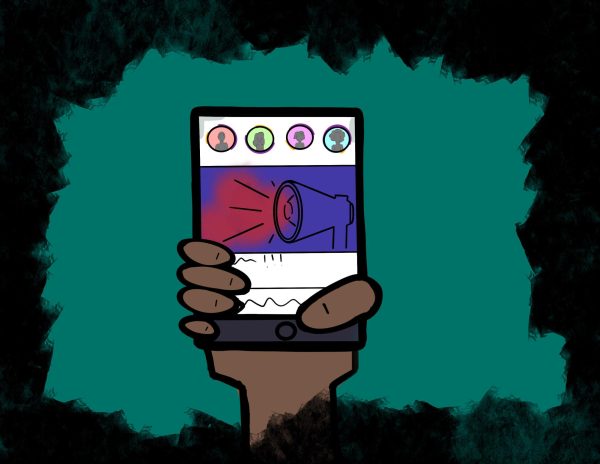Equity Lessons Unable to Solve Discriminatory Issues
This year, leadership was given jurisdiction to create and present their own lessons about equity on campus instead of having the district organize them. They are presented by student representatives with a focus on specific events with case studies of discrimination and an emphasis on discussion. These lessons are made with the intention to tackle Campolindo’s issues with discrimination among the student body and faculty. However, the nature of the lessons and the fact that they happen so sporadically make them largely unproductive. When asked about their thoughts regarding the new lessons, students reflected this sentiment.
For example, the case study presented at the first equity lesson of the 2022/23 school year asked students to think about whether “Diverse Friends Day,” an event for people to talk with students of color more, is a good idea or not. This discussion was not appreciated by all students however. According to junior Abigail Chen, “just sitting around in a circle and discussing why ‘Diverse Friends Day’ is good or bad is so stupid” and “it’s patronizing.” Chen said that the whole concept of these lessons are flawed because “if you want to make people less racist, you don’t surround them with people who aren’t racist to peer pressure them into being not racist. It’s an inherently ineffective system.” Further, discussing such an obvious topic is frustrating for students who understand things well beyond why “Diverse Friends Day” is incendiary.
That said, there are some students who feel differently about the changes to the equity lessons. “The fact that it’s student-led this year [has made] a huge difference…We tried to make it as interactive as possible and we put in a storyline that really hit home for everyone. Our hope is that these lessons will just start conversations on campus to make people more comfortable [when talking] about issues like racism, homophobia, islamophobia, and anti-semitisim because you can’t really make any progress in regards to those issues if you’re not talking about them,” said an anonymous creator of the lessons.
These statements were corroborated by other students in the class. It is important to mention the reason this creator requested to be anonymous. They were warned by the leadership advisor to not associate with the lessons due to the open criticism and disapproval spewed by parents in the community toward equity learning. It can be threatening to the mental health of these students if they put their names on the slideshow.
Views concerning the lessons and their “improvements” among the student body differ. Some members of the school find that the lessons being student-made solve a lot of the problems that made past lessons wholly ineffective. For example, questions such as “how does this optical illusion relate back to race?” are no longer posed. That’s probably for the best.
Students appreciate that the equity lessons are more representative of the students. “It’s made by the students, rather than someone who’s removed from the campus setting, so it’s geared towards the students,” said the anonymous creator. Further, both students and faculty find that the nature of the new lessons make them much more effective than the previous ones. “They promote discussion and any time you have discussion you’re promoting people listening and speaking to each other,” said French teacher Edward Willy.
Does discussion, airing out these problems, and talking about case studies produce real change? It’s better than brushing everything under the carpet and ignoring the problem. But can simply teaching and talking about the issue of discrimination fix it?
Many still feel these lessons are completely missing the mark when trying to achieve their goal of tackling discrimination and bias within the district. Junior Diane Parks relates the equity lessons back to her formative years in Canada, where she learned every year from the fourth grade about the discrimination against and tragic history of the Indigenous peoples who inhabit the country. “This information has already been available to us multiple times yearly…and we keep getting similar information. At a certain point it starts to seem redundant,” she said. The repetitive nature of the equity lessons makes them frustrating. Upperclassmen who have been learning about equity and bias for multiple years now are likely to find this true.
This is not to say it’s not important to learn about these topics – it should be one of the school’s top priorities to teach students about injustice in the world. However, when students are presented with the same information in only a slightly varied way the lessons become tedious. Further, if the information never translates into action it becomes unproductive. This is why equity lessons have become something most students dread and not something that inspires them. Many students reflect this sentiment. If I had a nickel for every time I heard someone say “race is a social construct,” I’d have quite a few nickels.
However, it is true that not all students have the same level of understanding. Most seniors and juniors have emotional maturity and complex thinking skills that most freshmen and sophomores have yet to obtain. But if this is true then why don’t the equity lessons vary throughout the grade levels? Upperclassmen should not be learning about concepts that are below their level of comprehension. This only brings about feelings of resentment and boredom.
Further, equity efforts struggle in making their mark because “the people that really need the lessons aren’t actually benefiting from them,” said senior Elliot Pelter. They don’t instill the accountability into students that is needed to thoroughly change mindsets. It is better to have ways “to step in and call it out” when discriminatory attacks happen, Pelter added. These comments allude to something important that the equity lessons lack. Actually intervening with discrimination on the spot does much more than trying to counteract it with lessons presented to an audience that might be close-minded. People can passively listen during the equity lessons, but this does not mean any of the concepts are going to stick with them.
Personally, I believe the hard work and thought put into the equity lessons by the students who made them is commendable. They researched, discussed and created a presentation with care and deliberation. They have taken on the responsibility of trying to enact real social change. The hearts and minds of these students are certainly in the right place. But these equity lessons are not capable of fixing discrimination within the school.
Discrimination based on race, ethnicity, gender, religion, and sexuality is something that’s been systematically embedded into this country for hundreds of years. Further, science has proven time and time again that humans have inherent implicit bias and we can’t help but judge people based on our preconceived notions of them. Trying to change the system and the science is a big ask for 40 minute equity lessons that are held once every 2 months. Many could argue that the purpose of the equity lessons is not to “fix” anything, but merely prompt discussion. But if there is no policy change, realization, or action resulting from this discussion, is it really doing anything? I would say no.
Campolindo High School has a history of discriminatory incidents that reflect an overall issue in the mindset and behavior of the school’s populace. The student body and faculty have spent time and energy to try and come up with a resolution that lessens these incidents. The equity lessons are part of their endeavors. However, these presentations, even if they are created by a group representative of the student body, are not achieving their desired goal. They lack accountability, their complexity does not reflect grade level, and they are repetitive enough to make students unengaged. These fundamental problems make them unable to help solve Campolindo’s bigotry.
Your donation will support the student journalists of Campolindo High School's The Claw. Your contribution will allow us to produce more issues and cover our annual website hosting costs.


Canadian Beaver • Jan 28, 2023 at 12:33 pm
“Campolindo High School has a history of discriminatory incidents that reflect an overall issue in the mindset and behavior of the school’s populace. ”
The WORLD is filled with discriminatory incidents and racism. And the developed democracies have the least of those undesirable traits.
Wake up.